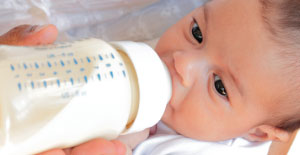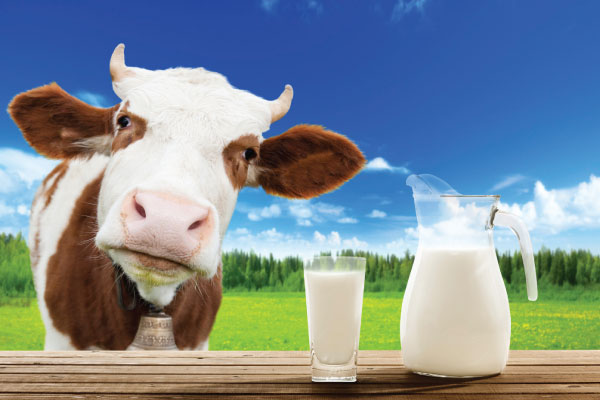Cow’s milk allergy (CMA) is the most common food allergy in young children, affecting roughly two per cent of under fours. CMA does not include other adverse reactions to milk, such as lactose intolerance, which are non-immune mediated. Dr Jinan Harith Darwish explains the condition.
Cow’s milk is the third most common food, after peanut and tree nuts, responsible for food-induced anaphylaxis in children and mixed-age populations. Milk is also the third most common food responsible for fatal or near-fatal food-induced anaphylactic reactions.
Broadly speaking there are two types of CMA: immediate – symptoms classically begin within minutes of exposure to cows’ milk protein; and delayed – symptoms typically begin several hours or even days after exposure. Some cases of CMA may show mixed features of both types.
 Casein and whey proteins are the milk proteins accountable for the bulk of milk allergies. Cooking diminishes the allergenicity of whey proteins, this may clarify why extensively heated milk is better tolerated by many patients. Similarly, yoghurt cultures, which ferment and acidify milk, diminish the amount of intact whey protein and may result in tolerance of yogurt-based dairy products by individuals with CMA exclusively sensitised to whey proteins.
Casein and whey proteins are the milk proteins accountable for the bulk of milk allergies. Cooking diminishes the allergenicity of whey proteins, this may clarify why extensively heated milk is better tolerated by many patients. Similarly, yoghurt cultures, which ferment and acidify milk, diminish the amount of intact whey protein and may result in tolerance of yogurt-based dairy products by individuals with CMA exclusively sensitised to whey proteins.
The diagnosis of CMA is based upon history and laboratory testing, when available. The symptoms will usually develop within the first week of starting cow’s milk in the diet. Most infants will show signs that involve the skin or the gastrointestinal system, which can include vomiting, abdominal pain, blood in the stools and diarrohea. Skin manifestations include hives and eczema. Infants can also present with wheezing, irritability, facial swelling and poor growth due to poor absorption of nutrients.
The treatment of CMA includes eliminating cow’s milk protein from the infant’s diet. Elimination diets are typically started with extensively hydrolysed formulas made up of broken down proteins which are able to be digested without an immune reaction. These formulas will work in 90 per cent of those with CMA. In some infants, it is necessary to use amino-acid-based formulas, which contain the individual building blocks of proteins.
In breastfed infants with CMA, the mother must eliminate all dairy and soy products from her diet if she continues to breastfeed. This may be tricky and is helped by having a dietitian discuss hidden sources of dairy and soy prior to starting the elimination diet.
 Giving infants goat’s milk or sheep’s milk will not improve CMA. Soy milk also is not recommended. Many infants will have similar allergic reactions to the proteins in these milks or soy-based formula.
Giving infants goat’s milk or sheep’s milk will not improve CMA. Soy milk also is not recommended. Many infants will have similar allergic reactions to the proteins in these milks or soy-based formula.
Fortunately, cow’s milk allergy resolves in 90 per cent of children by the age of six. Half will have tolerance when they reach a year and more than 75 per cent will have resolution by three years of age.
Most infants that are started on cow’s milk-free formulas or breastfed by a mother on a cow’s milk-free diet will need to remain on the diet for about six-12 months. At that point, the child can be challenged with cow’s milk, and if they have no reactions, milk can be put back into the diet.





































